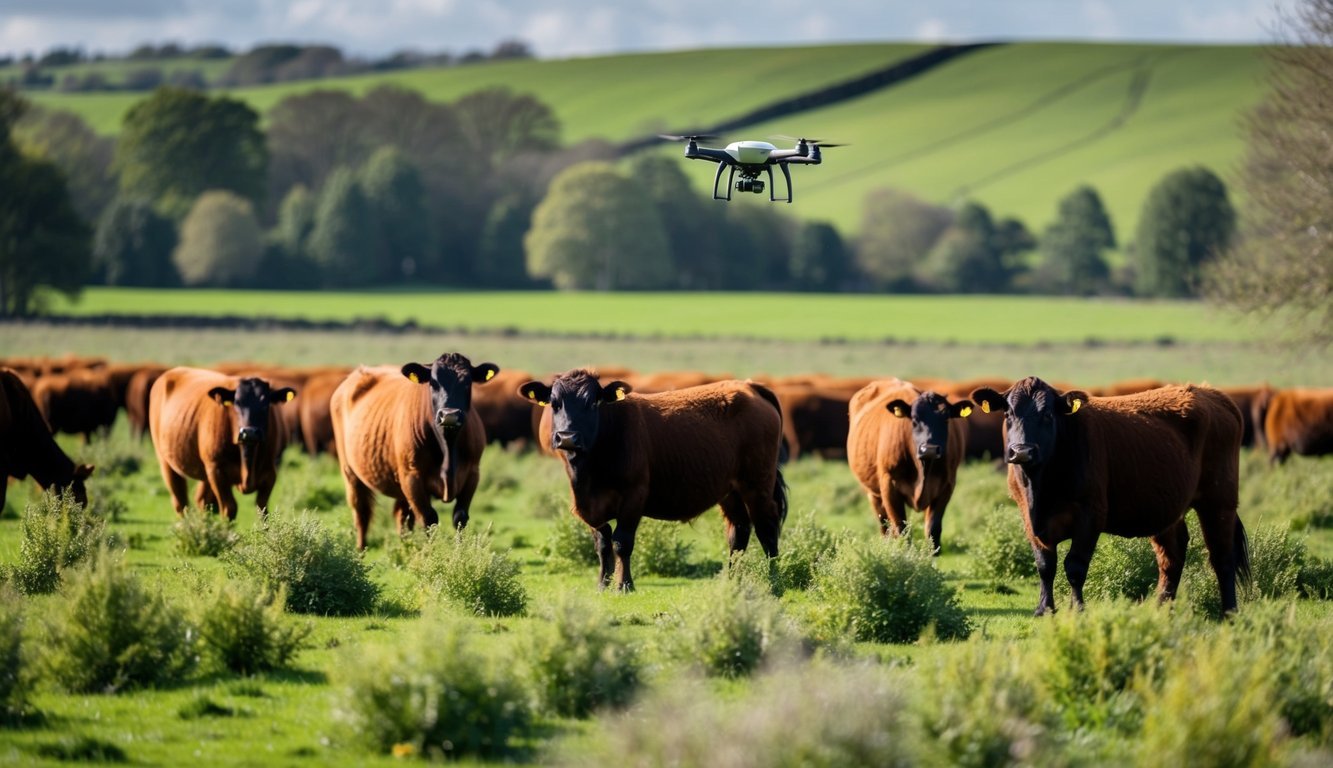
Advancements in Habitat Restoration and Enhancing Soil Health
Farmers throughout the UK are increasingly adopting progressive, ecologically sound methods aimed at enhancing biodiversity and agricultural productivity, while simultaneously minimizing dependence on chemicals and heavy machinery.
Utilizing Livestock for Bracken Control
A collaborative initiative with Innovative Farmers is underway on eight farms situated in Cumbria, Lancashire, and Yorkshire, where animals such as cattle, pigs, and ponies are being utilized to manage bracken without the use of chemicals. This invasive plant species poses a threat to grazing areas, public accessibility, and vital ecosystems, including habitats essential for the endangered High Brown Fritillary butterfly.
By strategically placing salt licks and hay, livestock are attracted to areas overrun by bracken, which leads to effective trampling. Cattle apply pressure to the bracken with their weight, while pigs excavate the starch-rich rhizomes, diminishing the plant’s regrowth potential and allowing other flora to flourish.
One trial participant, a cattle farmer from Hudson Place Farm in Cumbria, highlighted the significant bracken coverage on their fellside, which limits grazing options and overall biodiversity. The low-input nature of their farming approach makes the use of Belted Galloway cattle a logical and environmentally friendly method for addressing the bracken issue.
Supported by the James Hutton Institute, the research aims to balance bracken control with the preservation of habitats that nurture plants like dog violets, which are crucial for fritillary butterfly caterpillars. The impact on soil health is also evaluated, with assessments of carbon and nitrogen levels providing insights into the long-term efficacy of livestock-driven bracken management.
The Innovative Farmers Manager expressed enthusiasm about the initiative, noting that there is an urgent need for improved bracken management options among farmers. She emphasized the potential of this trial to inspire others to adopt similar nature-friendly practices.
Technological Innovations Enhancing Soil and Biodiversity in Cornwall
In Cornwall, technological innovations are becoming instrumental in promoting soil health and mitigating erosion. Collaborating with a group of local farmers, Malcolm Barrett is experimenting with “strip till” planting for maize, minimizing soil disruption. This approach addresses the adverse effects of heavy ploughing, such as soil compaction and runoff, which can degrade land and contaminate waterways.
Barrett’s experiments have revealed notable improvements, such as reduced flooding and an increase in beneficial soil organisms like earthworms. High-resolution soil sensors, created by the University of Plymouth, bolster these initiatives by delivering real-time data on soil organic matter and moisture levels. Mounted on robotic platforms, these sensors capture thousands of data points across agricultural fields, allowing farmers to make well-informed decisions.
The study leader remarked on the dual benefits of understanding soil dynamics — enhancing environmental conditions while also reaping significant advantages for the farm itself. Insights from the extensive data collected help identify specific areas needing attention and clarify which management strategies yield the best results.
Future Prospects and Technological Synergies
Furthermore, the university is exploring the use of robotic dogs equipped with AI to assess biodiversity in hedgerows and other inaccessible regions, which broadens the potential applications of technology in agriculture.
*For ongoing updates and detailed information regarding the bracken management trial, interested parties can visit the Innovative Farmers website, where field lab results will be accessible as open source material.*

